Review for Captain Earth Part 2
Introduction
I didn’t have the easiest of times with Part 1 of Captain Earth. It’s a studio Bones animation featuring giant robots and teenagers fighting to save the world. That’s a genre that Bones have a strong track record in, but I found Captain Earth to be less like Rahxephon, and more like Eureka Seven AO, an overwhelmingly pretty show, with likeable characters, but a dizzying overabundance of jargon. I gave Part 1 the benefit of the doubt, demurred my opinion for Part 2, so now it’s crunch time. It’s time to learn if Captain Earth will finally come good, and deliver on its promises, or if it will be buried under the weight of its confusing terminology.
Daichi Manatsu is your average high school student, albeit one whose life is a little aimless. That changes when he sees a news report of a strange, completely circular rainbow. He’s reminded of his childhood in Tanegashima, where his father worked as an astronaut before dying in an accident. Suddenly he has a direction for his life, or at least the summer vacation, and he heads back to Tanegashima, where as a boy he used to explore the space centre, and he made friends with a strange boy named Teppei who could create circular rainbows, and where he woke a girl from a weird bubble, and promised to show her a boomerang.
This time, he’s drawn to that same ‘playground’ again; although this time he encounters a mysterious schoolgirl with a recorder, who presents him with a bizarre gun. The next thing he knows, he’s at the controls of a giant robot called the Earth Engine, launched into orbit to defend the world against alien invasion. His childhood adventures were real as well, and with Teppei, the girl Hana, and a hacker named Akari, they’re now members of the Globe organisation, working to stop the Kill T-Gang attacks. It also becomes clear that his father didn’t die in a simple accident. He was a defender of the Earth, a Captain, and Daichi might just have the right stuff to be a Captain too.
The concluding twelve episodes of Captain Earth are presented across two discs from MVM. It’s also available on Blu-ray should you wish to partake of Bones’ animation in HD.
Disc 1
14. A Maiden’s Tear that Sparkled Through the Night
15. True Self
16. Her Flare
17. The Knights of Midsummer
18. Onslaught Through the Wilderness
19. Your Smile Means Everything
Disc 2
20. Satellitejack
21. The Meaning of a Captain
22. The Operation Summer
23. A Midsummer Night’s Dream
24. Auberon
25. Captain Earth
Picture
Captain Earth gets a 1.78:1 anamorphic, native PAL transfer on these discs. It’s come via the now typical route of Sentai to Hanabee to MVM, and there’s nothing to complain about with the transfer. The image is clear and sharp throughout, colours are consistent, and signs of compression are minimal, really just those odd moments of aliasing and noise during extreme action that you’d get at the limits of the DVD format. Blu-ray will definitely be the preferable choice here, given that this is another exquisite, Bones sci-fi animation. It takes a leaf out of Eureka Seven AO’s book when it comes to the look of the character designs, the detail in the world designs, and the fluid and energetic impact of the animation, especially in the show’s well designed and executed action sequences. There is a bit of corner cutting too though, with the Earth Engine launch sequence, painfully well animated, but recycled each time it appears, buying a minute or so of animation every time it repeats.
Sound
Captain Earth gets a DD 2.0 Japanese track with optional English subtitles. I had somehow come under the impression that Sentai dub all their anime as a matter of course (resulting in the odd lacklustre dub), but Captain Earth was a reminder that they do the occasion subtitle only release. And unlike Needless and Chunibyo, which got dubbed eventually for their Blu-ray releases following an initial DVD toe in the water, Captain Earth came out on DVD and Blu-ray simultaneously, making it a lot less likely that Sentai will eventually go back and revisit the show for a dub. The audio is fine, well balanced, and with no glitches or squawks to complain about. I really do like the music for the show, as they went in a grand, theatrical direction for the soundtrack, although the theme songs are forgettable. The characters are cast well, with voice actors suited for their roles. As for the dialogue... well that’s another matter. The subtitles are timed accurately and free of glaring typographical errors.
Extras
The discs present their content with static menus. The only extras are on disc 2, and amount to the second textless credit sequences and trailers for Black Bullet, The Irregular at Magic High School, and Hakkenden.
Conclusion
I don’t normally do this, but this time I’m actually going to quote some dialogue from the show, an exchange between three people at the end of episode 16.
-The tragedy of Daedelus Base's destruction by the Type 1 must never be forgotten.
-This light emission is more powerful than that of nine years ago.
-If it leads to all out war, mankind will be rendered extinct.
-Yes. Earth's weapon... is still the main body of the Kill-T-Gang
-It has not self-destructed its Ego Blocks even once.
-A temporary halt to the invasion is a real threat; it makes the Intercept Faction look good.
-The Blume is now in motion.
-The implementation of our plan for the future of Earth's mankind... The time of the Harvest is nigh.
-Then it is time to take a stand and take action.
Taken out of context it looks like meaningless nonsense. But I’ve watched the series through now, and 90% of it still goes over my head. At the end of the review of Part 1, I suggested that if Captain Earth escaped its predilection for obscure jargon in Part 2, it might become a memorable series. It does quite the reverse, and merely wallows in such verbal confusion that there are times where the show simply becomes a bunch of characters going “Blah, blah, blah” at each other for minutes at a time. The one redeeming factor might be that it’s wonderfully animated, beautiful to look at while it wallows. Actually another redeeming factor might be that the central four characters of Daichi, Teppei, Akari and Hana at least are interesting, and well-written, as opposed to the rest of the cast. They at least have something else going on in their lives beyond the technicalities of the plot, and it is possible to engage with their characters on an emotional level, to root for them to succeed.
Actually, the jargon turns out to be the least of Captain Earth’s problems. What really cripples the show is that there is just too much plot for a single 25 episode series. It really should have been twice the length to suitably explore all of its characters and all of its storylines. You have three different sets of antagonists for our heroes to deal with, and none of them are developed suitably well. First there is the Ark Faction opposed to the Intercept Faction when it comes to defence, typified by the Salty Dog group. That exchange quoted above comes from the Salty Dog leadership, three shadowy figures that are apt to plot and pontificate. Then there is the Macbeth group who appear to be commercial competitors to Globe and the Intercept Faction. From here actually develops a fourth antagonist to deal with, a rogue AI with delusions of godhood called Pac. It’s also here where the third antagonists, the alien Planetary Gear put into motion their plans for Earth’s destruction, through the medium of the Designer Children.
The focus shifts from antagonist to antagonist as our heroes have to deal with them, and none of them get the sort of satisfying development that would make them memorable in the story. The end of Part 1 saw the Designer Children recruit more to their cause by introducing the characters, exploring their back-story for an episode, and then awakening them to their powers. But they’re sidelined for most of this half of the series, so by the time they do pop up again for the story’s conclusion, you’ll have forgotten wholly who they were, and what emotional relevance they might have had for you.
Captain Earth has an uneven and unsatisfying narrative, twisting and turning and upping the ante all the way to its conclusion, but never establishing the emotional connections to have the viewer care about the stakes that the heroes are fighting for, or the challenges they face. So when the inevitable twist in the conclusion comes, the big reversal that is supposed to set the viewer back on his heels, it will probably be greeted with a “Meh”, and a roll of the eyes at the inevitable cliché. The show also leaves too much hanging, probably in the hope of a sequel series, but this 25 episode run just isn’t gripping enough to warrant a follow on. But it is damned pretty to look at, and the action is wonderfully animated. And at least you can invest in the personal travails of Daichi, Teppei, Akari and Hana, vicariously root for them in their personal lives, even if the bigger picture leaves you cold. Captain Earth is just another forgettable sci-fi anime from Studio Bones, not a patch on their top tier efforts.
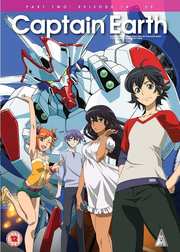
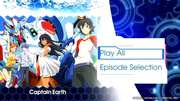

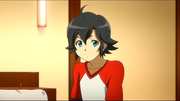


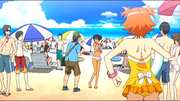
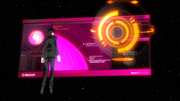
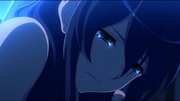
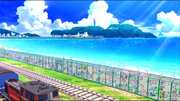
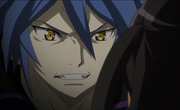
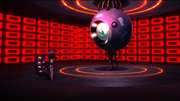
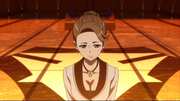
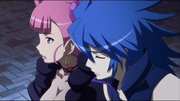
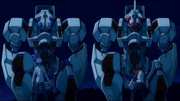
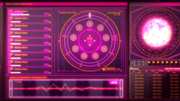
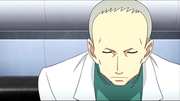
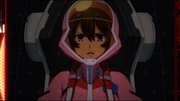
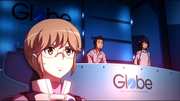
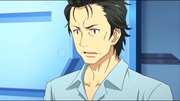
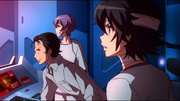
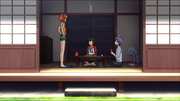
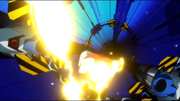
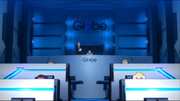

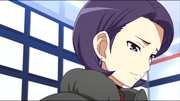

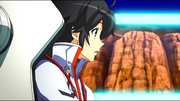
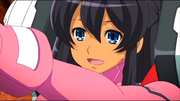


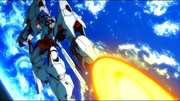




















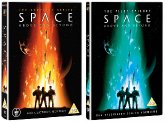




















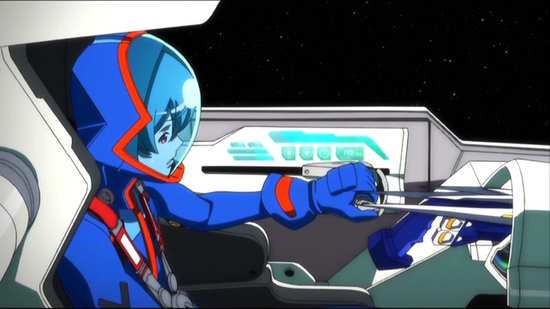


Your Opinions and Comments
Be the first to post a comment!